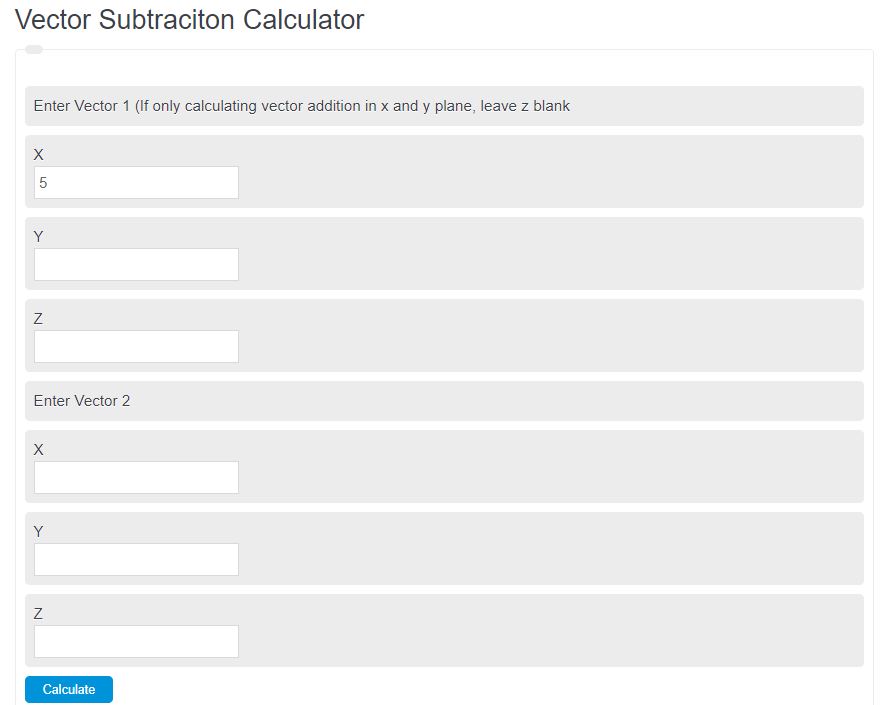Enter the x,y, and z values of two vectors n to the calculator to perform vector subtraction and yield the new vector.
- Vector Addition Calculator
- Resultant Vector Calculator
- Normalize Vector Calculator
- Vector Length Calculator
Vector Subtraction Formula
The following equation is used to calculate a new vector from the subtraction of one vector from another.
X3,Y3,Z3 = X1-X2,Y1-Y2,Z1-Z2
Where x,y, and z are the coordinate points of all three vectors, with x3,y3, and z3 being the coordinate values of the new vector.
Vector Subtraction Definition
Vector subtraction is a mathematical operation that involves finding the difference between two vectors. It is performed by subtracting the corresponding components of the vectors.
When two vectors are subtracted, their magnitudes and directions are taken into account. The resulting vector, known as the difference vector, represents the change or displacement between the initial and final positions of an object.
In physics, it is used to analyze the motion of objects and calculate their displacement, velocity, and acceleration.
In engineering, vector subtraction is essential for solving problems involving forces or velocities.
Vector Subtraction Example
How to calculate vector subtraction?
- First, determine the values of the first vector.
Determine the coordinate values of the first vector.
- Next, determine the values of the second vector.
Measure the coordinate values of the other vector.
- Finally, calculate.
Subtract the second vector from the first vector.
FAQ
What is the significance of vector subtraction in physics?
Vector subtraction is crucial in physics as it helps in understanding the relative motion between objects, calculating displacements, and analyzing forces and velocities in various scenarios.
Can vector subtraction be used in 3D graphics and animation?
Yes, vector subtraction is extensively used in 3D graphics and animation to calculate directions and magnitudes of movements, enabling realistic rendering of objects and scenes.
How does vector subtraction differ from vector addition?
While vector addition combines the magnitudes and directions of two vectors to form a new vector, vector subtraction essentially finds the difference between two vectors, resulting in a vector that represents the change or displacement.
Is it possible to subtract more than two vectors?
Yes, it is possible to subtract more than two vectors sequentially by subtracting each vector one at a time, following the principle of pairwise subtraction to find the resultant vector.
